What works in tech recruitment: our data vs. ChatGPT estimates
We analyzed 11 channels and their costs. Here's what paid off.

Hey everyone 👋
We’re On The Spot, and we build offshore R&D teams for fast-growing startups. Over the years, we’ve supported Orca Security, Cycode, Unity, and 30+ others in expanding their engineering capabilities. So when it comes to tech hiring and team growth, we like to think we know a thing or two about it.
Today we're sharing real CPCs, conversion rates, and all that recruiting pains and little beauties nobody usually talks about. This post will be useful if you’re hiring (or planning to hire) in Poland.
Quick visual takeaways
If you don’t have time to read the full story, here’re the key insights:
[slider-blog]
Below is the full breakdown of all 11 recruitment channels and how our numbers differ from what ChatGPT recommends.
ChatGPT’s version of CPC benchmarks
According to ChatGPT, there are three levels of the recruiting game: easy, medium, and hard. If you just looked at this chart, you’d think all you need is a credit card and a friendly copywriter. If only.

[fs-toc-h2] Our 11 recruitment channels and their CPC
[fs-toc-omit]How we spent our money and what worked (and what didn’t)
Let’s see what really happened when we took our budgets for a walk. To keep the experiment clean, we left out sourcer work and didn’t count recruiter salaries.
Here’s basically the inner workings of our sourcing engine — and the numbers behind it.
- LinkedIn outreach: the workhorse of modern recruiting
Here’s the paradox: everyone complains about LinkedIn outreach, everyone hates the spam but 80% of our hires in 2025 came directly from this channel.
Of course, attribution plays a big role. A candidate might respond via LinkedIn, but actually warm up by attending our TechSpot events or spotting us in a local community. But the point is that you have to show up where they are, consistently.
Just recently, we filled a Senior Data Analyst role for a US-based startup in 10 days – directly through LinkedIn outreach. If ever there was proof that it works, that’s it.
.png)
- LinkedIn organic posts: simple, proven, working
Candidates naturally scroll their feed to find jobs. With around 5,000 followers, our regular organic posts consistently pull in a 6.3% CTR at zero budget. Standard job posts attract between 2,000 and 4,000 views without any paid boosts. And when even a free post can fill a pipeline, it’s clear this channel is still very much alive.
.png)
- LinkedIn ads: our expensive lessons
We have a complicated relationship with LinkedIn ads. Like many, we were drawn in by the promise of precise targeting and a feed full of qualified professionals. In reality, the average CPC was $2.67 - $10, with a CTR of just 0.6%.

[space]While clicks themselves could be relatively cheap, the cost for a qualified lead climbed to $40–$120. We now use LinkedIn ads only to give a gentle nudge to posts that are already getting traction. Because paying a lot to be ignored hurts.
- Meta ads: surprisingly cheap clicks, but very specific
If our relationship with LinkedIn ads was complicated, Meta really surprised us. Our campaigns delivered a super low CPC of $0.12 with a solid CTR of 3.94%.

[space]However, the targeting lacked LinkedIn's depth for finding specific senior engineers. Instead, we found Meta ads excel at top-of-funnel brand awareness and for attracting UX/UI designers and artists. Astonishing, we know.
- Recruiting agencies: thanks, but we’ll take it from here
Official stats say agency fees hover around 15–20% of the annual salary. In our case, they could be around $10,000-$15,000 per hire. Ouch.
We now use them only for critical, hard-to-fill roles and often prefer freelance recruiters for more flexibility.
Why we moved away from agencies:
- Too expensive. Period.
- Pushing their own candidates. Agencies often rely on outsourcing-style experience, where a solid junior can be sold as a senior.
- Lack of tech expertise. Our roles are complex, and agencies usually don’t get the specifics.
- They don’t go deep. Most agencies don’t take time to understand the tech stack and team culture — and that’s exactly what makes the difference in hiring.
[space]We know it sounds a bit bold, but after a decade of building R&D teams, we recruit better than most of those specialized agencies.
- Job board listings: paying more ≠ hiring faster
Listings on NoFluffJobs, JustJoinIT, and BulldogJob aren’t cheap, starting at $450 per posting. Last year, we bought a package of 50 vacancies for $11,000. It resulted in about 5 hires, with the cost per hire at $2,200.
Yes, these platforms provide solid support for keeping our hiring pipeline full, but the price is steep. These days, we rarely pay for listings, because other channels deliver better results at a lower cost.
- Local tech communities: great for relationship-building
We’ve built relationships with 250+ local tech communities — from tight 100-person chats to massive 80k-member groups. Out of those, we actively post and collaborate with 50+ on a regular basis.
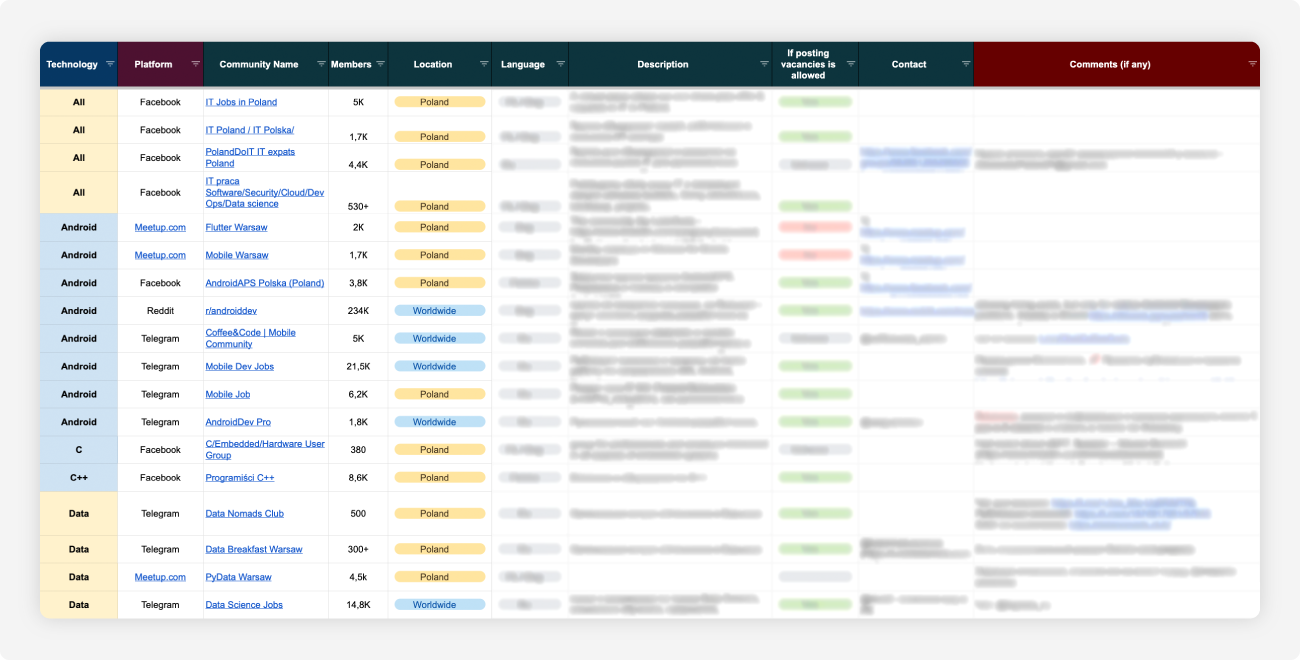
[space]There are two types of placements in communities — paid and organic. The first includes sponsored posts or partnerships that open doors to highly relevant audiences. The second is non-paid, where visibility is earned by showing up, sharing knowledge, and slowly becoming a familiar name.
[space]According to our data, the average CPC for paid channels sits around $0.60 with a 4.31% CTR — not bad for something that still feels half art, half anthropology.

[space]Сhannels differ in community culture. Each community operates by its own rules: Linux channels respect technical credibility, Java groups value local connections, and everyone appreciates when you sound like a human rather than a recruiting bot. Understanding these differences is key.
In general, we focus on building relationships. Like all relationships, some take time to develop, but people ultimately appreciate the contributions and value you bring.
- Internal newsletters: loyalty pays off
Somehow, while we were busy measuring other channels, our newsletter quietly grew to over 6,000 subscribers and became our warmest talent pool:
- 60-78% open rate
- $1.23 CPC
- 11.9% CTR
- 60-78% open rate

[space] Most subscribers found us through TechSpot events (our own events, which we’ll tell you more about below) or referrals. They already know we’re humans, not just another recruiting spam list.
We once hired a Director of Engineering for a cybersecurity startup from a newsletter sent.
- Referral program: your good name brings you hires
Referrals remain among the most reliable sources of quality candidates. They account for 3-15% of our annual hires, with costs ranging from $500 to $5,000 per successful placement.
What makes this channel work is the relationships we’ve built with current and former team members and partners over the years.

- Tech events: few hires, but all the trust
When we started TechSpot – our tech events in Poland – we weren't thinking about recruitment. We were interested in creating a space where our engineers could discuss architecture challenges. Somehow, through what we can only describe as accidental community building, we became known for local tech events that now draw 200+ engineers per event and speakers from Google Cloud, Orca Security, Unity, Wise, Fibery and many more.

[space] At around $5,000–$9,000 per event, we've accepted that we're hosting very expensive networking parties. Each event typically brings in about 200 registrations and contacts, which is valuable, but the direct ROI is still not entirely clear (though we've recently started selling tickets and actually covering our costs.)
- PR articles in local media: playing the long game
A featured article on a local job board costs around $2,000 and, of course, you shouldn’t expect instant hires. For us, one article generated:
- 1400 views
- 81 total clicks
- 1 application
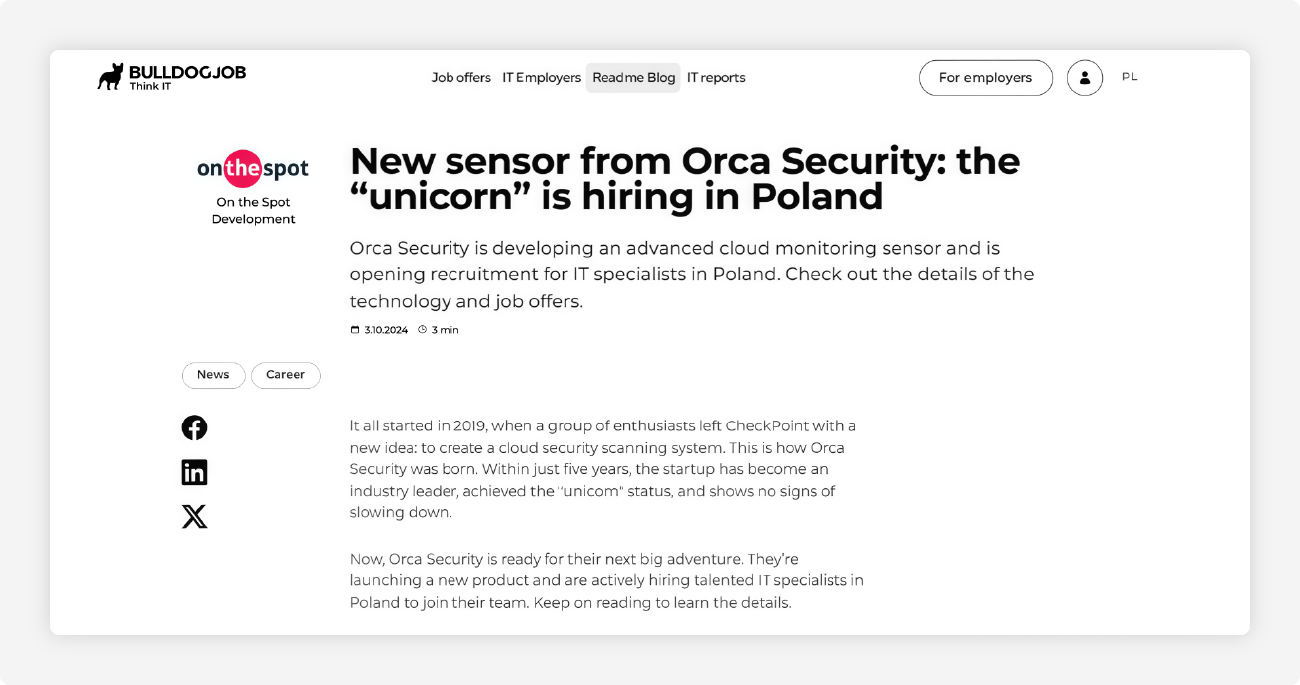
[space]It’s great for getting your employer brand in front of the local audience, but the numbers show the limits: $24.70 CPC and $2,000 cost per application.
In short, better for brand awareness than for actual hiring.
ChatGPT’s estimates vs. our reality
ChatGPT’s numbers are technically correct if you ignore nine years of context.
Here’s how its CPC predictions stack up against what we experienced:

On the surface, the numbers look similar — but the devil’s in the details.
Behind every CPC, there’s a story of context, timing, and human factors that the AI model can’t fully capture.
[fs-toc-h2] Conclusion: what works in tech recruitment
[fs-toc-omit]The verdict
Recruiting in Poland, like everywhere else, is about building long-term relationships, connections, and referrals — not just pouring money into ad campaigns and hoping for unicorns. The path to candidates has its own texture, and that’s something ChatGPT still doesn’t quite capture 🌝
That said, here are a few observations:
- ChatGPT’s estimates are generally on point, though our actual costs are often even lower
- The channels it recommends mostly make sense, but executing them is way harder than it looks
- Some channels were irrelevant, and a few important ones didn’t make the list at all
Keep in mind, this is only our experience. Your costs and channels might differ, but gut feeling tells us the difference probably won’t be huge.
And if you’re building teams and actively hiring, we’d be happy to support you. Drop us a message here!
***
About the author
Liza Makarevich is a Chief Success Manager at On The Spot Development. She has spent over 10 years helping startups and fast-growing tech companies build R&D teams and recruit tech talent in Poland.
Feel free to contact her via LinkedIn or email.
Stay in tune
with On The Spot
You've successfully signed up for our newsletter. Keep an eye on your inbox.
Read more
Discover what else is happening at On The Spot

TechSpot
Tech events in Poland and online for everyone interested in software architecture and systems design. Like-minded people, top experts from leading companies, and a big engineering community.

137 Podcast
Conversations with top engineers, CTOs, and founders about day-to-day engineering and everything that excites us about tech.

.svg)


.png)

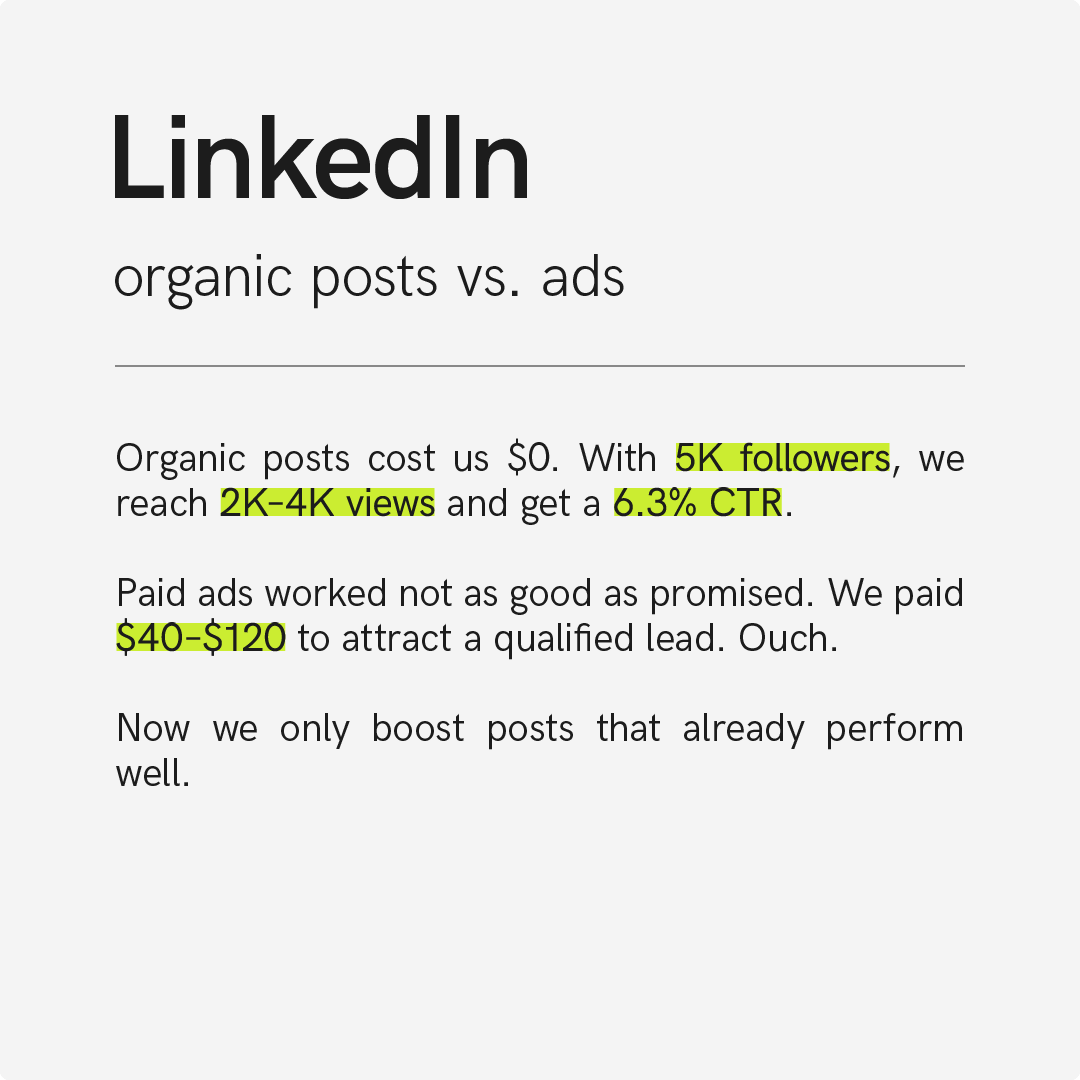

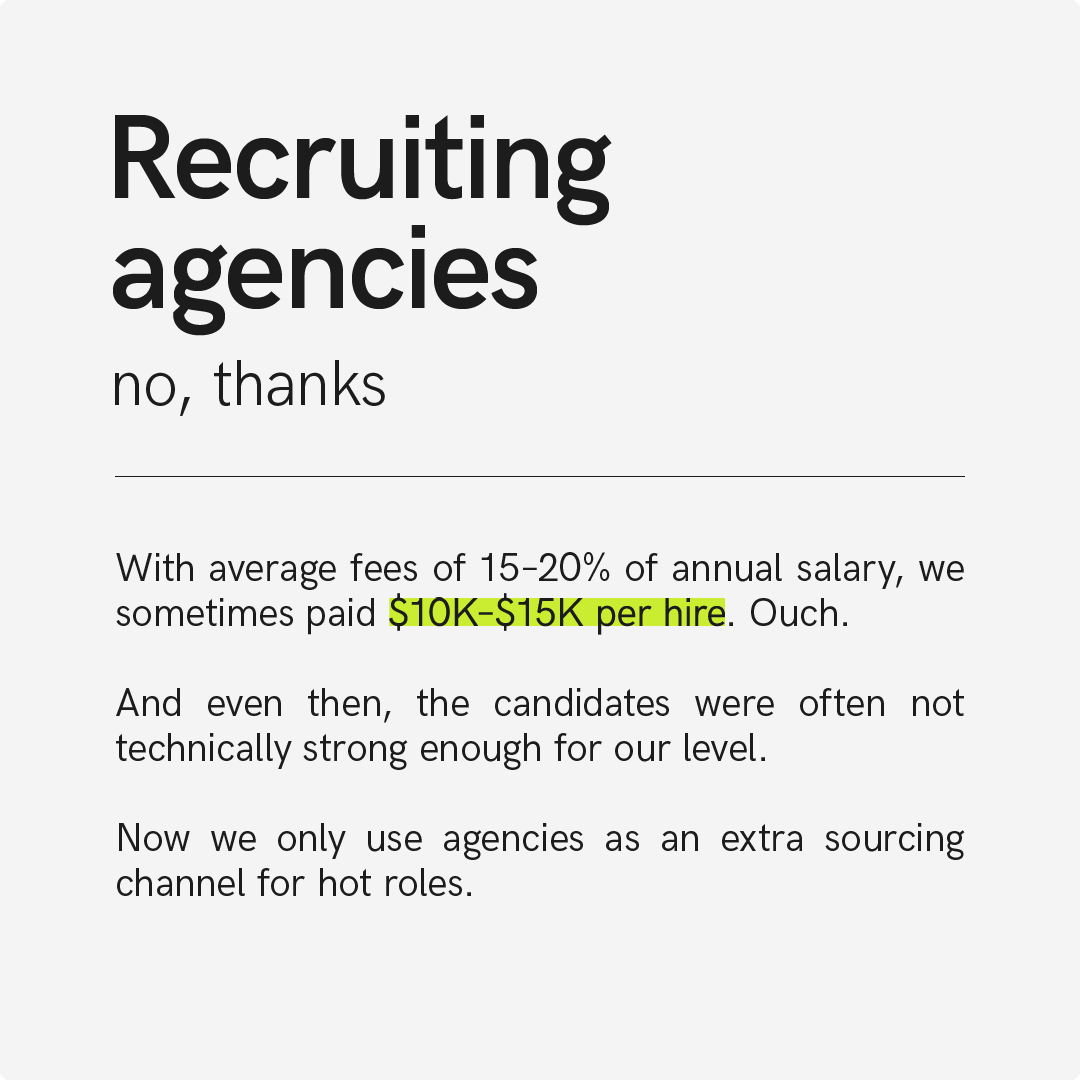






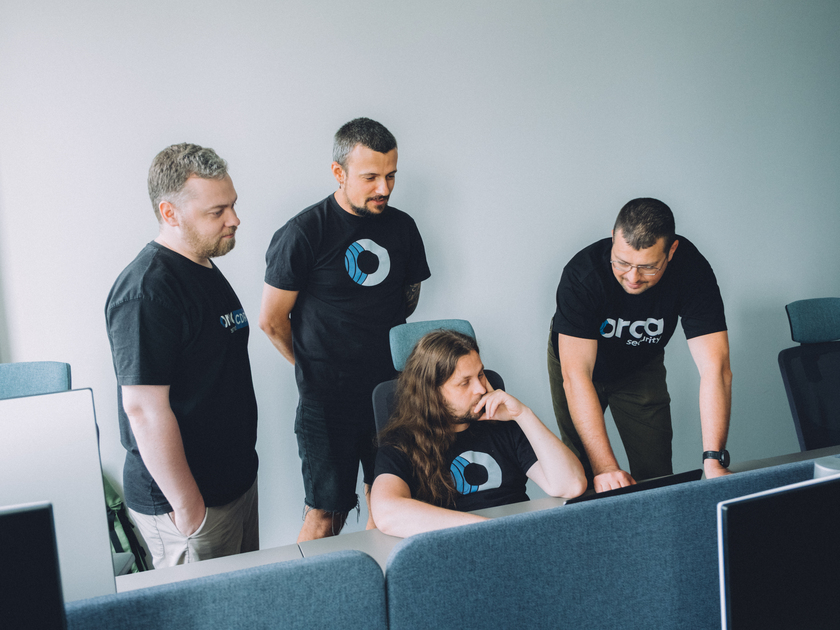
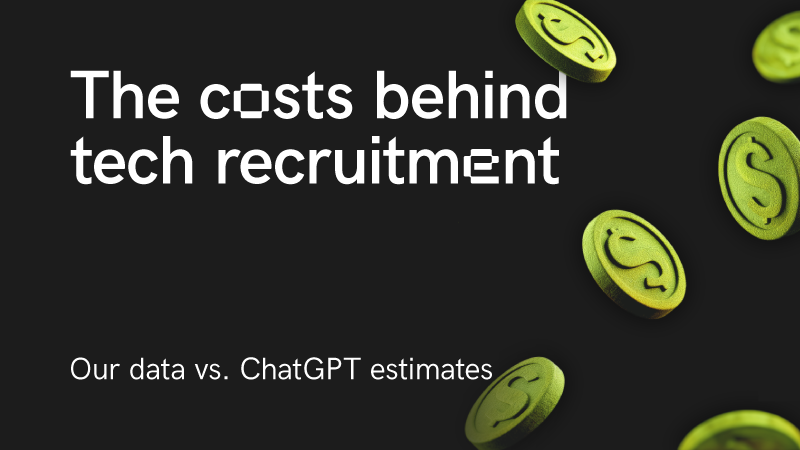

.svg)


